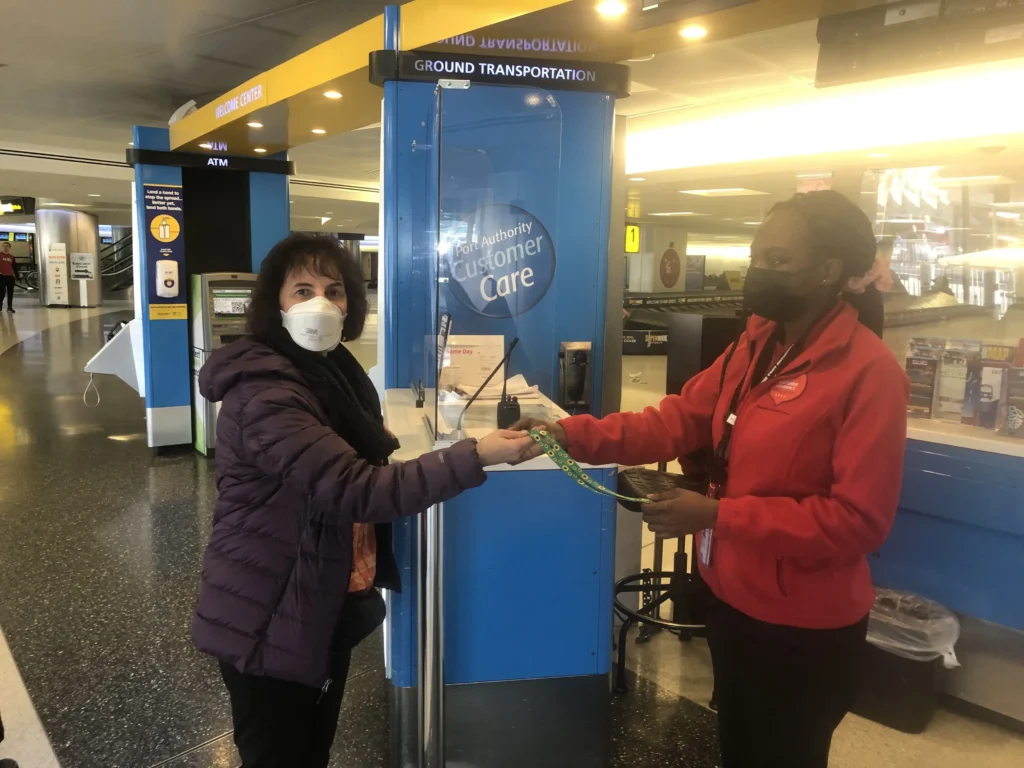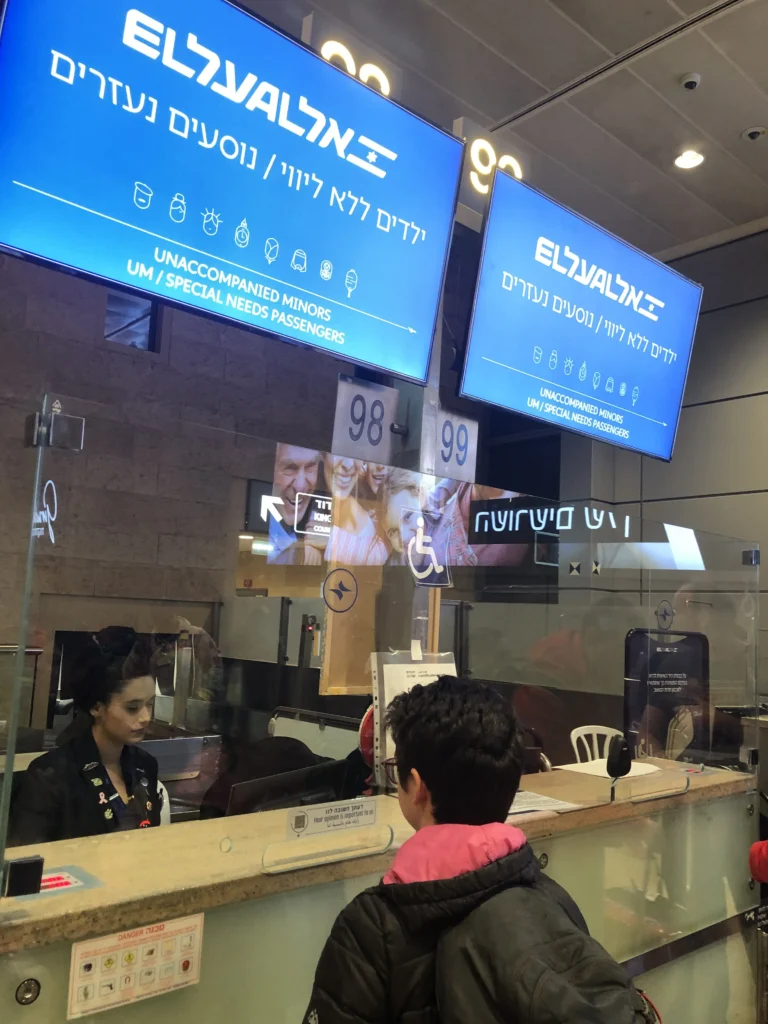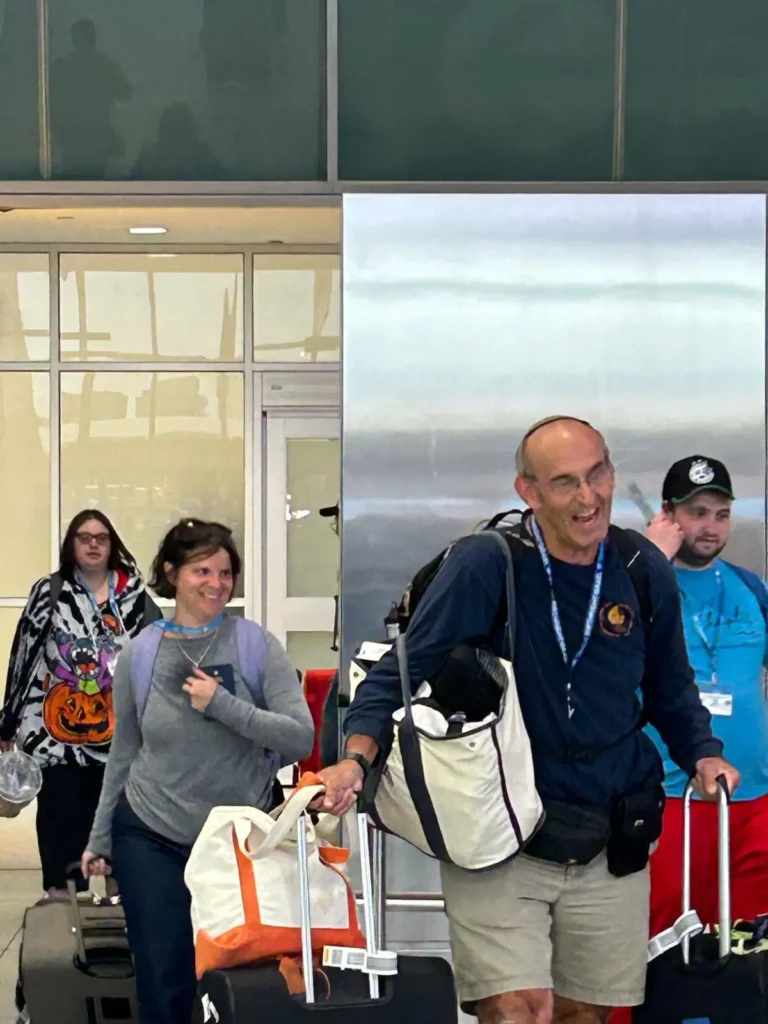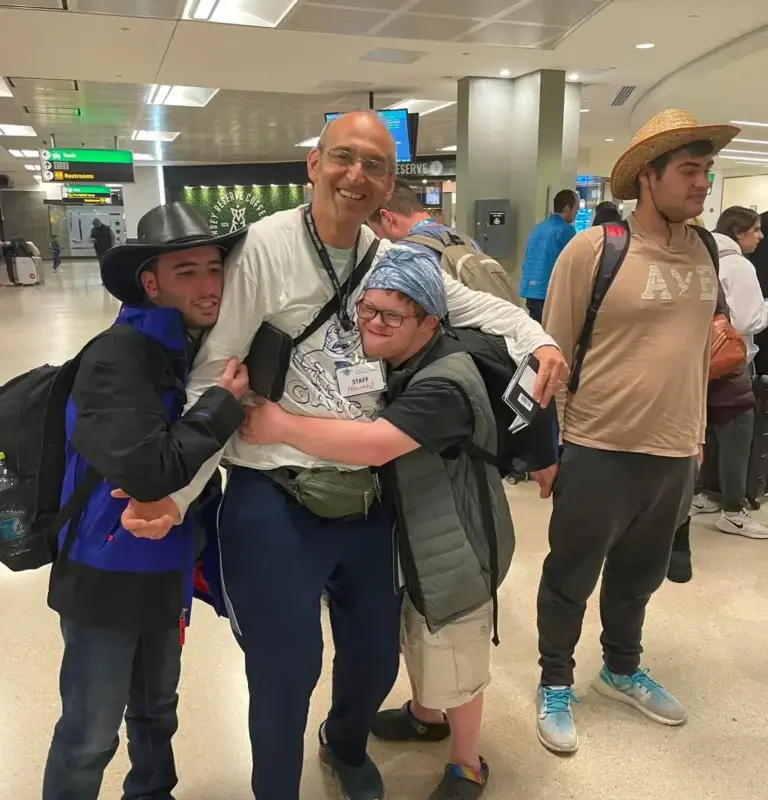Originally appeared in Melange Accessible Journeys Magazine, October 2025
In my experience bringing fifteen groups of people with intellectual and developmental disabilities to Israel on 10-day heritage trips, the biggest challenge has historically been accessing services and accommodations from airlines for people with invisible (hidden) disabilities, and clearing up misperceptions. On one occasion, while boarding a flight with a group of autistic travelers, I was told by the flight attendant, “The pilot wants to speak with you!” He had observed a burly 25-year-old member of my group doing pushups and other exercises in the boarding area and he had concerns the passenger might pose a safety threat. We spoke, he was understanding and the flight proceeded without incident. On other occasions, passengers stared questioningly as our group boarded the flight during the appointed “pre boarding” time. Fortunately, these negative experiences happened more than five years ago. Due to increased awareness and changing laws, it is getting a bit easier for people with invisible disabilities to navigate airports and airlines. But it is still a work in progress.
Our trips to Israel typically depart from one of the New York area international airports. Participants often fly to New York unaccompanied from such cities as Chicago, Los Angeles or Toronto. While they are able to travel independently, navigating a large international airport alone is often challenging as it involves leaving the aircraft, walking to baggage claim and taking the AirTrain or shuttle to international departures to meet the group.
We have tried many systems over the years for helping these group members. On rare occasions, airline customer service has granted permission for a member of our staff to pass through security without a boarding pass to meet the passenger as they leave the plane. On other occasions, we have been in phone contact to help them navigate their way to baggage claim. When we have asked airlines to escort the passenger in the same way they would accompany a passenger with a physical disability (i.e. by pushing them in a wheelchair), they have insisted that the person can only be accompanied IF in a wheelchair. When we explained that the person functions at a high level cognitively and is capable of walking but simply needs assistance to navigate the complexities of the airport, our request for help was denied.
Fortunately, things are changing in terms of services for passengers with a wide range of disabilities. In 2022, seven of the nation’s passenger airlines announced that they are part of a new pledge organized through the industry trade group Airlines for America to increase accessibility in plane travel. In taking the pledge, they committed to a series of new steps to improve travel for people with “mobility, cognitive and social disabilities.” They agreed to work to create a passenger accessibility advisory group to work with the disability community to improve policies and operations and to work to improve passenger transfers and their handling of wheelchairs and other mobility aids. Further, staff training in the area of disabilities would be implemented. The pledge was signed by the CEOs of Alaska Air Group, American Airlines, Delta Air Lines, Hawaiian Airlines, JetBlue Airways and United Airlines Holdings as well as the executive chairman of Southwest Airlines.alt

Airlines like Delta now have extensive “Accessible Travel Services” links on their websites. Delta explains, “Before boarding, in the air, at your destination and anywhere in between, our gate agents and attendants will be available to assist.” They then offer options to click if you need assistance with Nuts or Other Allergies, Wheelchairs and Mobility Devices, Blind or Low Vision or Deaf or Hard of Hearing. For people in need of “cognitive disability assistance,” informs customers, “We are here to help if you or a companion needs navigation or wayfinding assistance throughout your airport experience. Our goal is to provide you with support to make your journey more accessible and enjoyable, including assistance communicating, checking in, boarding, deplaning or connecting to another flight. For assistance, please find one of our Red Coats – our airport customer service experts, identifiable by their bright red coats.” This has proven to be a game changer in recent months as Delta takes helps our participants get to the group meeting area—in another terminal—with their luggage in hand!
On the same link, Delta has a list of airports which offer multi-sensory rooms “to support passengers who need to take a break from the sights and sounds of a busy airport. Some multi-sensory rooms include calming colors, sounds and a small aircraft mock-up to give passengers an opportunity to get familiar with air travel before their flight.” Passengers are instructed to look for one of the airline’s Red Coats for access to the multi-sensory rooms. This service is particularly useful for families of young children with autism.
United also offers useful resources and information on its website for travelers with disabilities. The website notes, “We recommend taking a non-stop flight whenever possible. That way you spend less time at the airport and on the plane. When you’re ready to buy your tickets, you can let us know that you or someone who is traveling with you has a disability. This information lets us prepare to offer help at the airport or during your flight.” It doesn’t specify how, but it offers passengers with disabilities several way to prepare for the trip including reading a social story, and reading an outline of the boarding process . The social story starts, “Today is my travel day. It’s okay if I feel nervous or excited when it’s time to go to the airport. I’ll bring my checked bag, which is bigger and flies in the belly of the plane, and my carry-on bag, which is smaller and will go on the plane with me…”.
United also suggests, “You might also consider practicing for your trip” and notes that “Wings for Autism®actually lets families rehearse the entire flying process. This includes getting a boarding pass, going through security and boarding the plane.” Wings for Autism is a program of Arc, a disability rights organization, geared for both individuals and families and aviation professionals. They report, “The Arc’s Wings for Autism®/Wings for All® (Wings) program gives families and aviation professionals the confidence to take to the skies with ease by providing an airport “rehearsal,” as well as a presentation on the aircraft features and in-flight safety protocols.”
Many airports (325 around the world!) participate in the Hidden Disabilities Sunflower program. Travelers can visit the airport’s accessibility page to find out if they provide free Sunflower lanyards and where to collect them. Their website, explains, “Some disabilities, conditions or chronic illnesses are not immediately obvious to others. For some people, this can make it hard to understand and believe that someone, with a “non-visible” condition genuinely needs support. Some people question whether you have a disability because you don’t look ‘like you have a disability.’alt

That is why we created the Hidden Disabilities Sunflower – to encourage inclusivity, acceptance and understanding. It is a simple tool for you to share that you have a hidden disability voluntarily. Simply by wearing the Sunflower, you’re just letting everyone know that you might need extra help, understanding, or just more time.”
As an example, in September, 2024, Etihad proudly posted on its website, “Abu Dhabi Airports and Etihad Airways are taking a significant step towards creating a more supportive travel experience with the launch of the Hidden Disabilities Sunflower programme at Zayed International Airport (AUH) and onboard Etihad Airways flights. This initiative underscores both organisations’ commitment to supporting all passengers, particularly those with non-visible disabilities.” We often stop by the booth at the airport to get the lanyards for participants on our Israel trips.
Emirates has taken its commitment to passengers with disabilities to new heights. In January, 2025, they announced that they will become the world’s first Autism Certified Airline, “inviting customers with autism and sensory sensitivities to experience Emirates’ seamless services and personalised hospitality, making travel more accessible for all.”
Their website notes the challenges to travel for those with autism are well documented. “For many members of the global autism community, international air travel is a highly challenging experience, or something to be avoided completely, due to the high level of sensory stimuli that can be involved. A survey on AutismTravel.com revealed that 78% of families are hesitant to travel or visit new locations, and that 94% of respondents would take more vacations if they had access to places where staff are autism-trained and certified. As part of Emirates’ mission to make travel more inclusive and accessible for all, this significant step also supports Dubai’s ambition to become the most accessible destination in the world.”
Toward that end, they surveyed more than 14,000 people with a variety of disabilities, including people with autism, those with sensory sensitivities and their families and caregivers. They developed standards for both passengers and airline staff and conducted several Emirates flight audits on both long and short haul routes. Finally, they helped create new industry standards that accommodate passengers with autism and sensory sensitivities during air travel. The thorough certification process includes ensuring at least 80% of customer-facing staff complete the dedicated training, alongside a commitment to ongoing training and improvements. Thusfar, their “Introduction to Autism and Hidden Disabilities’ training, which was completed by 23,000 staff and they strive to train more than 30,000.
Despite these very positive recent developments at airports and in the airline industry, a recent article in Disability Scoop (June 11, 2025) expresses some concerns, particularly in regard to users of wheelchairs and scooters on flights. They note that the “Wheelchair Rule,” finalized by the Biden administration in December, and requires annual training for airline staff and contractors who help people with disabilities or who handle wheelchairs, will not be implemented as planned. The regulations, which impose stronger standards for how assistance must be provided, specifying that it be “safe and dignified,” and detail the steps airlines must take if a wheelchair is damaged or delayed, is being pushed off until a later date. alt

They report, “DOT is now providing notice that it will continue to exercise its enforcement discretion and not enforce the Wheelchair Rule before August 1, 2025, to allow additional time for the officials appointed or designated by the president to review the Wheelchair Rule to ensure that it is consistent with the law, including the requirements of the 2024 FAA Act, and administration policies, and to consider the issues raised by a lawsuit filed recently to challenge certain provisions of the Wheelchair Rule,” the Transportation Department said in a notice about the change.
About 5.5 million Americans use wheelchairs and 1 out of every 100 wheelchairs or scooters on domestic flights is damaged, delayed or lost, according to data provided when the rule was finalized.
We welcome the many promising developments in services and supports for passengers with disabilities and look forward to ongoing improvements.

